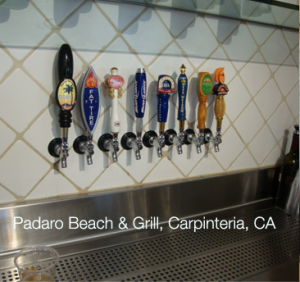How it works. The direct draw beer dispenser is the most common and simplest system used in commercial beverage service applications. The keg is kept in a cooling unit only a few feet from the dispensing faucet, requiring only about five feet of tubing. The beer draft system is dispensed using CO2 to create pressure and push the beer through the tubing to the beer tower, where it is dispensed.
Making the choice. Choose a direct-draw tap system if you are storing all your kegs beneath the bar as opposed to a walk-in keg cooler in a different room. This is ideal for people running portable bars, such as at outdoor concert or catered banquets, or for bars that only offer one or two beers on tap. Choose a direct-draw tap system if you are storing all your kegs beneath the bar as opposed to a walk-in keg cooler in a different room. This is ideal for people running portable bars, such as at outdoor concert or catered banquets, or for bars that only offer one or two beers on tap.
How it works. This system relies on a walk-in cooler to house the kegs, insulated air ducts to surround the beer tubing, and a fan to circulate cold air from the cooler through the ducts. The circulating cold air maintains the beer lines at a cool temperature. This system works best when kegs are within 25 feet of the tap, and uses significantly more energy than direct draw systems.
Making the choice. This type of system can usually accommodate many kegs of beer and many tap lines, so it would be a good choice for a bar serving several beers on tap. Operators considering this type of system must have the infrastructure in place for a keg-cooler and air ducts, and there should be no more than 25 feet between the cooler and the tap. Bends in the ductwork add distance and may reduce cooling efficiency.
This system relies on a walk-in cooler to house the kegs, insulated air ducts to surround the beer tubing, and a fan to circulate cold air from the cooler through the ducts. The circulating cold air maintains the beer lines at a cool temperature. This system works best when kegs are within 25 feet of the tap, and uses significantly more energy than direct draw systems.

Glycol-Cooled Draft System
How it works. This system employs a Glycol cooler, which circulates Propylene Glycol. This is an organic compound often used as an indirect cooling agent for beer draft systems. The Propylene Glycol circulates through strong, flexible plastic tubing which runs along or around the beer lines, supplying a cooling agent to keep the beer at a constant temperature from the walk-in keg cooler to the tap in the front of the house.
Making the choice. This system is the best choice for operations in which the keg cooler is farther than 25 feet from the bar. Glycol lines can run without the need for ducts, so they can be run just about as far as you need to get them from the keg to the tap.
This system employs a Glycol cooler, which circulates Propylene Glycol. This is an organic compound often used as an indirect cooling agent for beer draft systems. The Propylene Glycol circulates through strong, flexible plastic tubing which runs along or around the beer lines, supplying a cooling agent to keep the beer at a constant temperature from the walk-in keg cooler to the tap in the front of the house.
No matter what system you use in your bar, any draft system can lose money if not properly operated. Whether your beer is too foamy, the keg goes flat or customers are returning beer because of a funny taste, make sure you are operating your draft system to maintain the most possible product and hence make the most money off your investment.